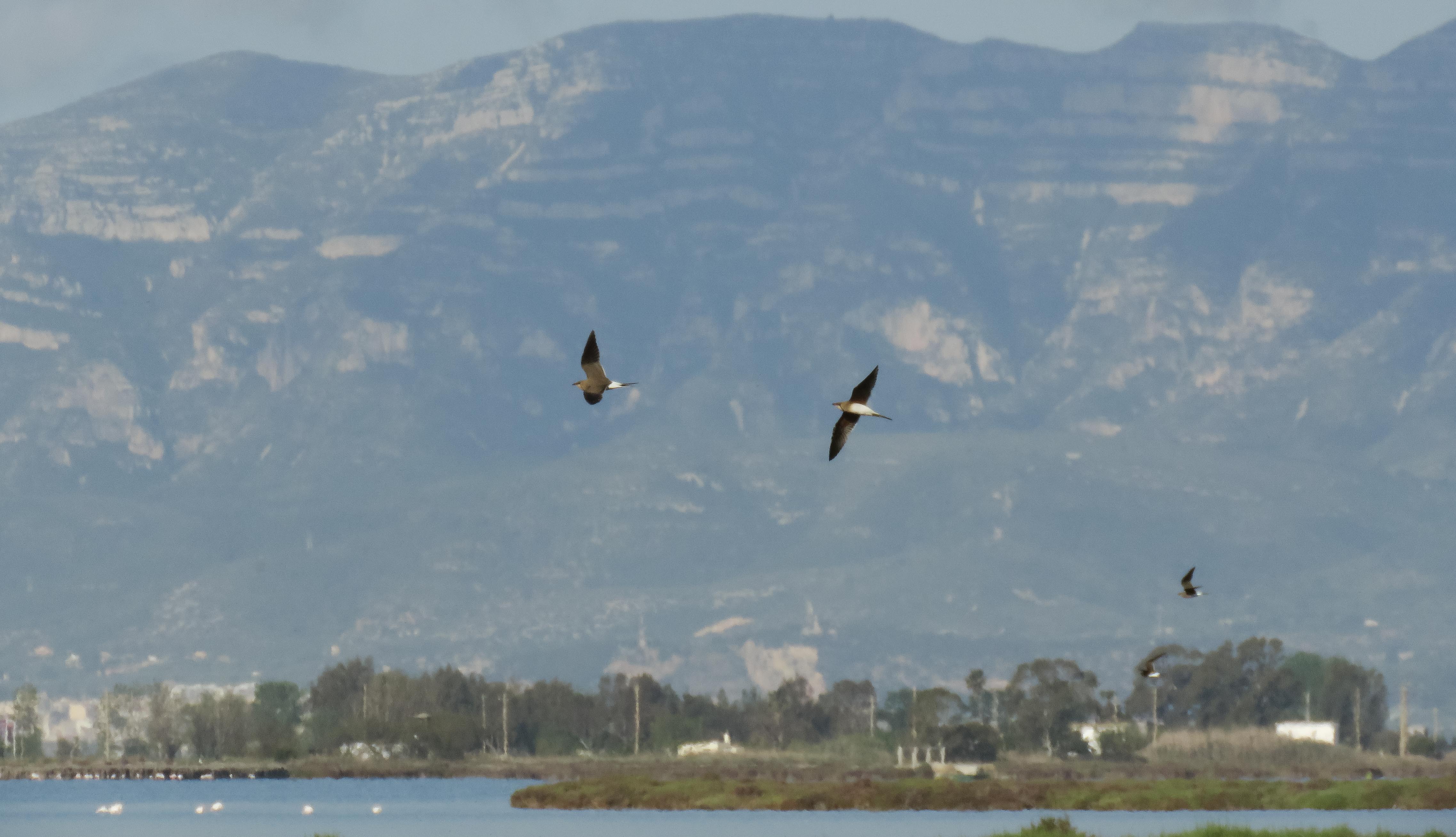At dawn we heard but failed to see 2 Indian Nightjars at the Ban Bang Resort. We then made a morning visit to the Petchburi rice fields with mixed success as we never found the fish ponds, and the rice harvest that proves attractive to raptors wasn't really yet underway, although it does seem we found some non-breeding plumaged Asian Golden Weavers before stumbling across another identification challenge being an adult Spotted Eagle. We saw a few other nice species including a couple of Yellow Bitterns and a family trio of Bronze-winged Jacanas before heading back towards the coast. We returned to our accommodation late morning and unexpectedly bumped into Kamol Kamolphalin there who reminisced about a trip he made to the UK years ago when he travelled from Shetland (where he saw the breeding Snowy Owls) to Scillies with Bryan Bland. He then kindly showed us his recent sketches and paintings of Parrotbills in the far north of Thailand - superb. He told us that he had successfully twitched a Long-billed Dowitcher from afar that morning that was feeding on the salt pans at the abandoned building. We then spent all afternoon visiting the various salt pans between Hat Chao Samran and Pak Thale with a visit to a small freshwater marsh just south of a temple producing good numbers of Long-toed Stints, a few Grey-headed Lapwings and a pair of Black-headed Ibis. Highlights of the various salt pans were the Long-billed Dowitcher and a Spoon-billed Sandpiper along the entrance track at Pak Thale. At dusk an Indian Nightjar was heard and then successfully seen at the Ban Bang Resort.
Little Grebe 2
Painted Stork 6
Asian Openbill 80
Black-headed Ibis 2
Yellow Bittern 2
Night Heron 5
Pond Heron sp. 150
Cattle Egret 50
Grey Heron 25
Purple Heron 1
Great Egret 200
Intermediate Egret 2
Little Egret 200
Little Cormorant 50
Cormorant 5
Black-winged Kite 2
Greater Spotted Eagle 1 adult
Eastern Marsh Harrier 1
Brahminy Kite 6
White-breasted Waterhen 4
Black-winged Stilt 250
Grey-headed Lapwing 4
Red-wattled Lapwing 10
Pacific Golden Plover 5
Grey Plover 2
Little Ringed Plover 10
Kentish Plover 25
Lesser Sand Plover 100
Greater Sand Plover 10
Bronze-winged Jacana 3
Long-billed Dowitcher 1
Black-tailed Godwit 150
Marsh Sandpiper 200
Greenshank 10
Dunlin 1
Wood Sandpiper 6
Common Sandpiper 2
Great Knot 250
Sanderling 6
Red-necked Stint 300
Long-toed Stint 100
Curlew Sandpiper 30
Spoon-billed Sandpiper 1
Brown-headed Gull 300
Gull-billed Tern 20
Caspian Tern 10
Little Tern 10
Whiskered Tern 50
Red Turtle Dove 100
Spotted Dove 10
Peaceful Dove 10
Asian Koel 2
Indian Nightjar 1 + 2h
Germain's Swiftlet 200
Indian Roller 5
Smyrna Kingfisher 2
Green Bee-eater 1
Blue-tailed Bee-eater 2
Ashy Woodswallow 8
Common Iora 1
Brown Shrike 3
Black-naped Oriole 1
Black Drongo 100
Malaysian Pied Fantail 2
Large-billed Crow 4
Streak-eared Bulbul 2
Swallow 20
Oriental Reed Warbler 3
White-vented Myna 250
Common Myna 2
Asian Pied Starling 30
Siberian Stonechat 5
ASIAN GOLDEN WEAVER 5
Baya Weaver 50
Scaly-breasted Munia 20
Eastern Yellow Wagtail 2
Richard's Pipit 20
Non-breeding Asian Golden Weaver at Petchburi rice fields
I was dreading struggling with trying to identify non-breeding plumaged Weavers but the conical bill (as deep as long) and unstreaked underparts both point to this species and perhaps the dark upper mandible is helpful as it compares quite favourably with Gerry Brett's images of the species here:
Non-breeding Weaver sp. at the Petchburi rice fields
At the time I thought this pink-billed Weaver with a lightly streaked breast was most-likely a Baya Weaver so a few images would act as a nice comparison to those of the Asian Golden Weaver above. However, the bill structure looks disconcertingly similar, and both a little short and deep for Baya Weaver, so I now wonder if they are images of a different age/sex class of Asian Golden Weaver?
Adult Greater Spotted Eagle at Petchburi rice fields
In addition to appearing both broad-winged and short-tailed it is just possible to discern the pale comma at the base of its outer primaries in the above images that is indicative of the species. Whilst it is considered an uncommon winter visitor and passage migrant it is still the most frequently observed Aquila in Thailand.
Juvenile Bronze-winged Jacana at the Petchburi rice fields
Adult Bronze-winged Jacana at Petchburi rice fields
The Ban Bang Resort
Butterflies at the Ban Bang Resort
Long-billed Dowitcher alongside Marsh Sandpiper (upper) and Redshank (lower)
Apparently some internet discussion concerning this bird has discussed whether an Asiatic Dowitcher is involved. Hopefully the above images show it was in fact only Redshank-sized (as would be anticipated for Long-billed) rather than Black-winged Stilt-sized as for Asiatic Dowitcher...
Non-breeding adult Long-billed Dowitcher at Lam Pak Bia
... its pale greenish-yellow leg colour also eliminates the possibility of it being an Asiatic Dowitcher as does its basal half of its bill being greenish. Having been only a handful of records it is considered a very rare winter visitor to Thailand.
Adult Brahminy Kite at Lam Pak Bia
Brown Shrike near Pak Thale
Long-toed Stint near Pak Thale
An evening session of wader watching at Pak Thale
Kentish Plovers at Pak Thale
Still difficult to reconcile these with the appearance of the 'White-faced Plovers' seen a few days ago.
Non-breeding Sanderling at Pak Thale
Non-breeding Red-necked Stints at Pak Thale


















































